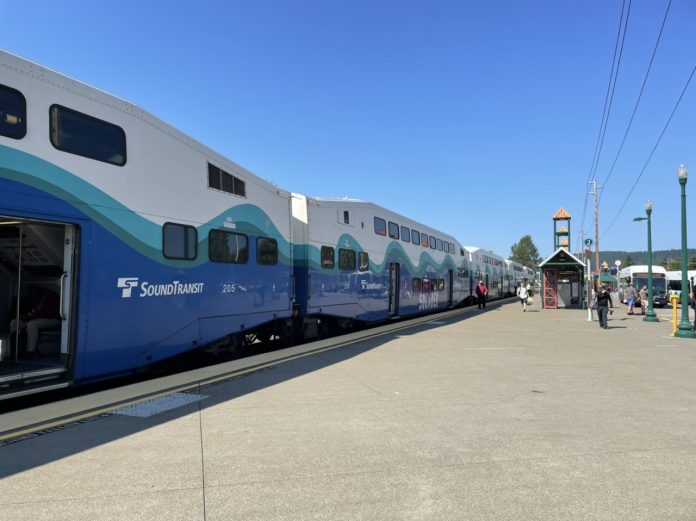Sound Transit is taking a beat to rethink Sounder South capital expansion investments and plan targeted investments that could benefit existing Sounder and Amtrak services in the Tacoma area. The effort could mean bigger investments in Sounder S Line service with additional weekday trips and even the introduction of weekend trips.
In a meeting this month, the agency’s System Expansion Committee approved a contract modification with David Evans and Associates, a local civil engineering and planning firm, that will top $22.3 million. That’s an increase of $9.8 million from a previously authorized contract amount of $12.5 million, but the benefits from additional planning and design work could greatly outweigh their cost.
Sounder South ridership is growing but circumstances have changed
For years, the S Line saw booming ridership levels as riders south of Seattle saw it as a superior transit option to jobs in Downtown Seattle. That all changed with the pandemic and a shift to higher rates of remote work. Riders who remained onboard were mostly commuters in positions that had to be done at a specific worksite. With employers calling more workers back into the office a certain number of days now, ridership has been increasing somewhat but is very midweek-oriented and still only 31% of pre-pandemic levels.
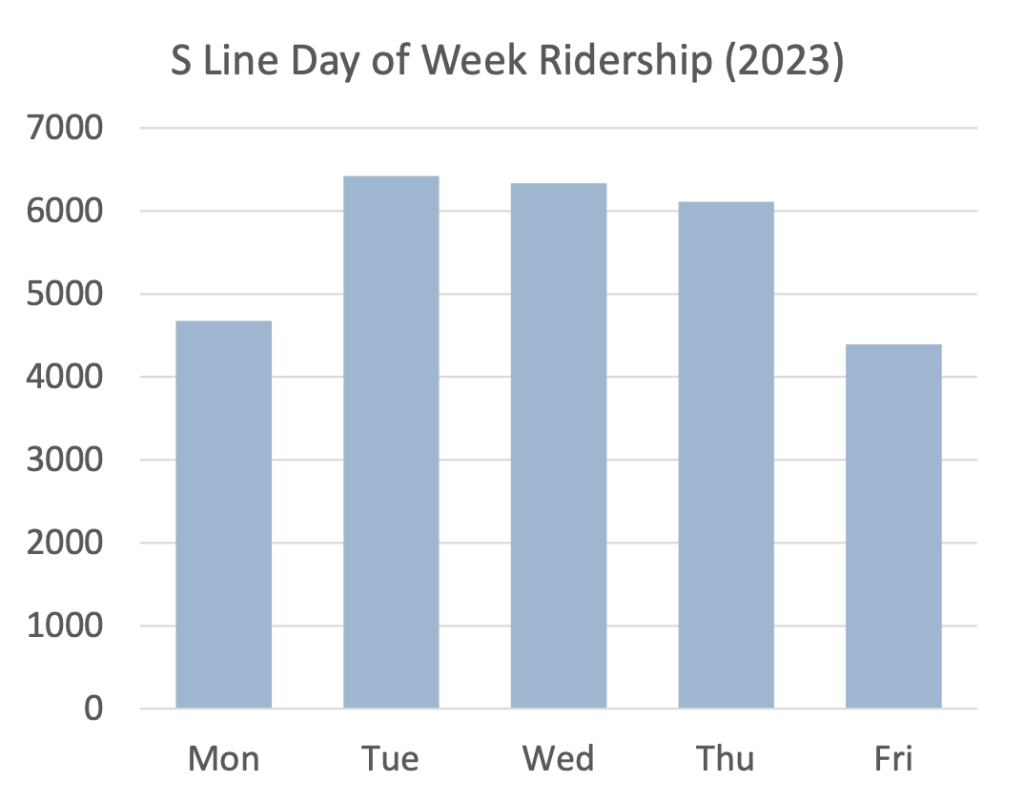
Last year, agency officials acknowledged that there has been growing interest in more service and adjustment of schedules. That has come, in part, due to slow ridership growth in the post-pandemic era but also a realization that Sounder can and should be much more of a regional transit tool than it is today.
Sound Transit is now reconsidering the direction of investments on the corridor in light of the fact that the agency adopted a strategic plan developed in the pre-pandemic era just as the pandemic was hitting the region. The agency also intends to develop plans that would bring double tracks to three additional segments of the S Line as well as improved signal systems. That related effort is being partially funded by the Federal Railroad Administration under a $10 million Consolidated Rail Infrastructure and Safety Improvements (CRISI) Program grant.
Double-tracking and signal improvements planned for agency-owned corridor segments
“The Sounder South Capacity Expansion program will be providing matching funds for the Federal Railroad Administration grant to evaluate double-tracking in the Tacoma area and fund an update to the Sounder Strategic Plan,” said Chelsea Levy, an agency capital program director, in a meeting earlier this month. “And secondarily, the DuPont Extension project will provide matching funds for the CRISI grant to evaluate double-tracking in the DuPont segment.”
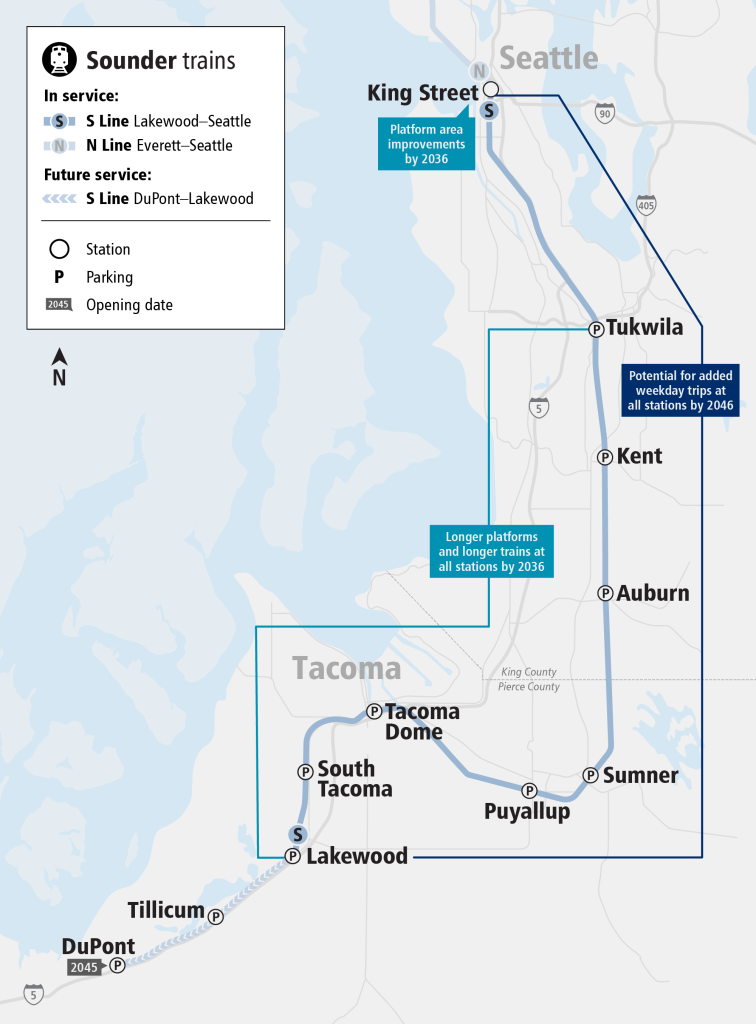
Melissa Saxe, a Sound Transit project development manager, said that the agency qualified for the federal grant because of a 50% funding match approved in the 2023 annual budget. “The grant enables Sound Transit to advance planning, conceptual design, and environmental review for the double track and signal improvements,” Saxe added.
The three double track and signal improvement segments include: TR Junction to Portland Avenue in Tacoma, S Pine Street to S 66th Street, and Lakewood Station to DuPont Station. While the funding will be helpful to the planning effort, it won’t fund construction. However, completing planning could put the projects in a shovel-ready state and make the agency eligible for construction grants, Saxe said. The planning phase of the project is expected to last through 2027.
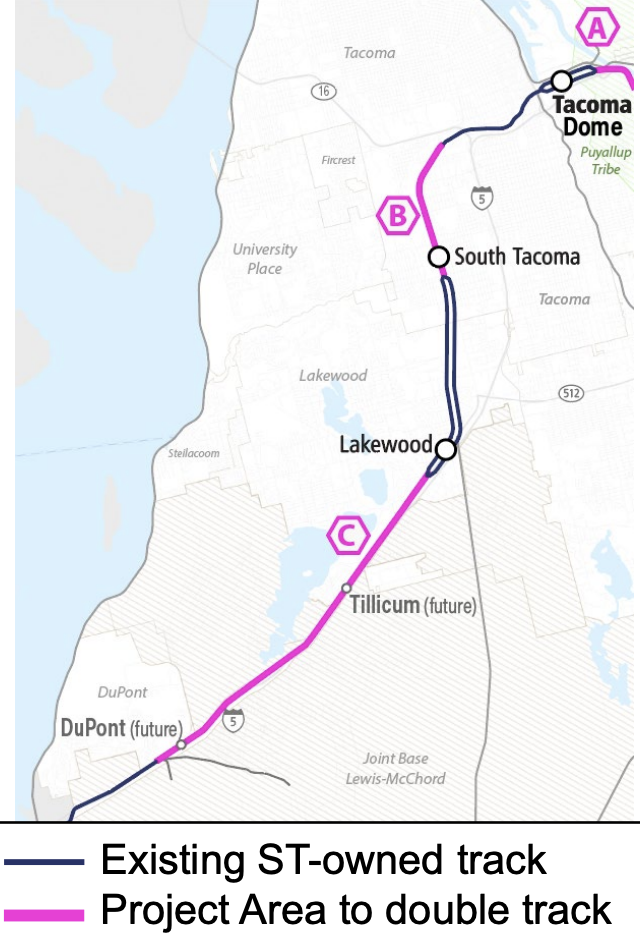
Sounder South strategic plan is set to get an overhaul, but DuPont Extension gets little attention
Pivoting to the larger $1.3 billion Sounder South capacity investments, Saxe hinted at a potentially significant overhaul to the strategic plan which currently places investments in platform extensions and longer trains over more trips. As part of that process, the agency will assess evolving commute patterns and update ridership projections.
“It is notable that in recent outreach we have heard a growing public interest in more Sounder schedule options, particularly with the recently announced delay of the Tacoma Dome Link Extension,” Saxe said. “Peer agencies like Northstar commuter rail in Minnesota are also evaluating service alternatives for their passengers.”
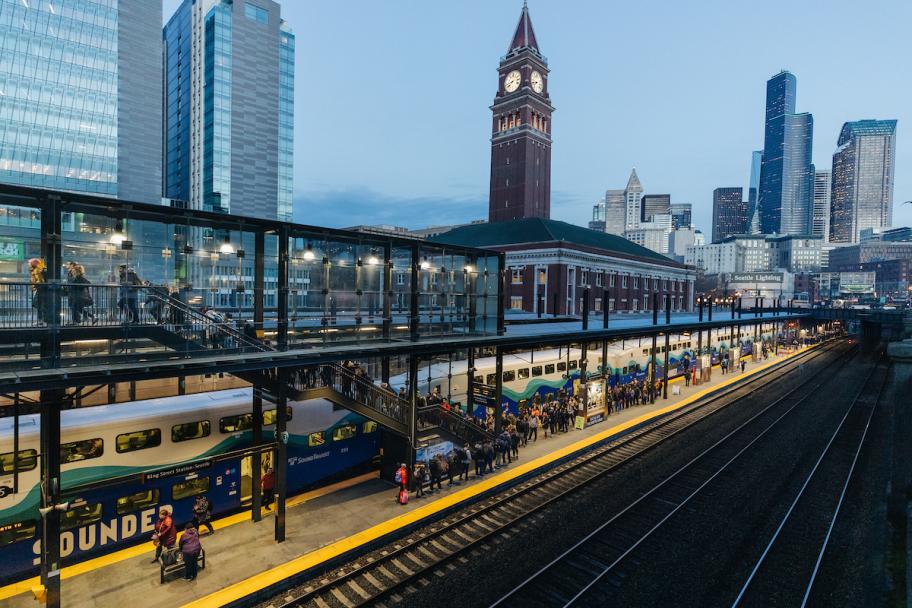
King County Councilmember Claudia Balducci seemed encouraged by this and offered her support of extending service hours.
“I do wonder if the ridership on this line would be more robust… and useful to riders if it didn’t have a great big gap in the middle of the day, if it was possible to make the service more all-day and maybe extend hours, at least in the PM,” Balducci said. “Even using this as a commute, I imagine as somebody who has typically worked a 9-to-5 schedule, that last train looks a little early for me as a rider to be confident in relying on it every day.”
The last southbound train from Seattle is at 6:30pm and the last northbound train from Tacoma is at 5:15pm.
In a blog post following the meeting, Sound Transit was fairly optimistic about what a rethink process might entail. “This gives us an opportunity to take a look at reimagining Sounder South,” the post read. “Can it serve more travel needs and types of trips? Whether that be the UW-Tacoma student who lives in Kent, the Sumner warehouse employee commuting from Lakewood, the Seattle resident figuring out if they can date someone who lives in Tacoma, or the Puyallup family wanting to go to Pacific Science Center on the weekend.”
The agency eluded to “research, peer comparisons, public outreach, and discussions with our partners at BNSF and WSDOT” that would ensue to potentially clear a path for this broadening of service. However, the obstacle that BNSF ownership of track represents was mentioned as well: “We’ll also evaluate whether any new trips could run mid-day, in the evenings, or on weekends, bearing in mind that any new trips or changes to the existing schedule require approval and negotiation with BNSF Railway, which owns most of the tracks Sounder operates on.”
Something that did get a passing mention during this month’s agency meeting, but didn’t get as much attention as it should have was the DuPont Extension. The presentation quietly dropped an astonishing cost estimate of $446 million for the two-station, eight-mile extension — an astronomical sum for what seems to be a small project.
However, the original Sound Transit 3 plans loaded it up with many bells and whistles, including a new train storage facility for five trains, an operator comfort and security facility, car parking, and a second mainline track. Plans also promised that there would only be four peak-hour trains each direction on weekdays and that the stations at Tilicum and DuPont each would only have one at-grade platform.
Looking ahead
As Sound Transit re-evaluates and revises its Sounder South plans, it should reconsider the sequence and scope of investments, including for its DuPont extension.
For the DuPont extension the agency would do well to scrap or delay parking facilities, rethink its storage facility strategy, and be strategic in phasing elements of the second mainline tracks. With creative scheduling, targeted passing and siding tracks, and additional signals, the agency might be able to deliver the project much sooner than 2045 and for substantially lower costs. The agency and riders might also be better served if planned service levels are reconsidered. Extending all or nearly all S Line trains to serve all stations south of Tacoma Dome Station, or running a partial shuttle service, could simplify operations and drive more ridership to the line.
Serving simple stations on a lightly used single-track corridor shouldn’t come at extraordinary cost. There are, for instance, entire passenger rail systems in Switzerland that operate on a single track, with strategic passing tracks, that still maintain 20-minute frequencies. So this is something that Sound Transit and its consultant engineers would be wise to look into closely as they develop recommendations and plans.
As for the larger Sounder South capital program, service should be a top priority; not larger trains or longer platforms. More trips in each direction at more times of the day would make better use of existing resources and Sounder more attractive to a wider array of transit riders. It also could offer those riders substantial travel time savings (about 20 minutes) over the future Link 1 Line extension to Tacoma, which will be very slow-going from Seattle (74 minutes under current estimates).
The days of Sounder as just a commuter rail system could be numbered. Rethinking the southern line could set the agency on a glide path for what Sounder is destined to become: regional rail. Expanding the scope of this strategic effort just a little bit more could illuminate how to realize a wider Sounder network in Pierce County and even future-proof expansion to Olympia.
Stephen is a professional urban planner in Puget Sound with a passion for sustainable, livable, and diverse cities. He is especially interested in how policies, regulations, and programs can promote positive outcomes for communities. With stints in great cities like Bellingham and Cork, Stephen currently lives in Seattle. He primarily covers land use and transportation issues and has been with The Urbanist since 2014.

